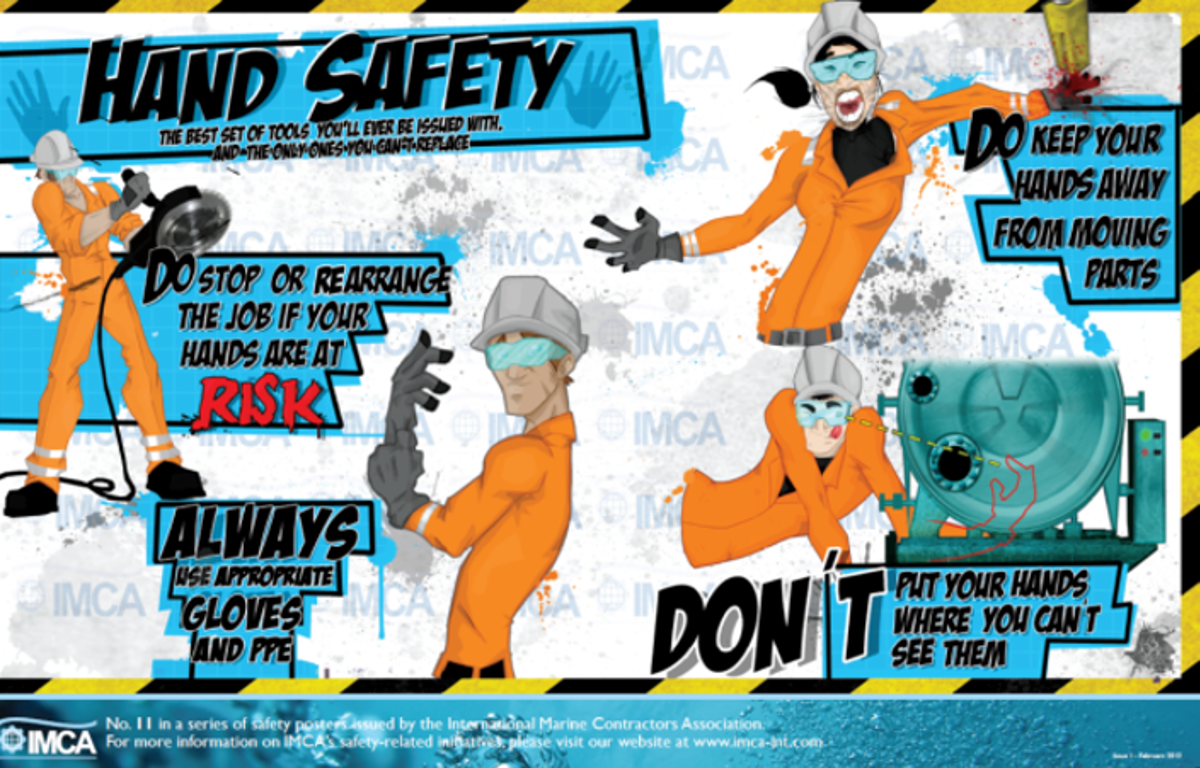Hand and finger injuries
- Safety Flash
- Published on 13 July 2023
- Generated on 9 December 2025
- IMCA SF 17/23
- 2 minute read
Hand and finger injuries comprise almost a fifth of the incidents and events submitted by IMCA Members just in the last year
Given that the previous four events in this Safety Flash are all hand injuries, some of them quite serious, even shocking hand injuries, we pause to reflect for a moment, and to summarise some trends in hand and finger injuries amongst our members in recent times.
Hand and finger injuries comprise almost a fifth of the incidents and events submitted by IMCA members just in the last year.

If we look more closely at the most recent ten incidents involving injuries to hands and fingers, some worthwhile conclusions may be drawn from what our members identified as having gone wrong.
| Contributory factor | |
| Poor or incorrect PPE | 6/10 |
| Equipment in use was not adequate | 5/10 |
| Lack of awareness of risk or inadequate risk assessment | 5/10 |
| Poor spatial awareness – fingers were in the wrong place at the wrong time | 4/10 |
| Lack of supervision | 4/10 |
| Lack of communication or poor communication | 3/10 |
| Procedures were not followed, corners were cut | 2/10 |
| Someone could have stopped the job – but didn’t. | 2/10 |
| Someone stepped in and helped with a task when they should have stood back | 2/10 |
Additional causal factors included:
- Poor weather / environment or a noisy and stressful environment
- A focus on getting the job done quickly rather than doing it safely
- Lack of experience or lack of training.
Please be reminded of IMCA safety promotional materials at https://www.imca-int.com/store/safety-promotional-materials/ including:
- Hand safety (poster)
- In the line of fire (longer video)
- Line of fire (short three-minute video).
The ten incidents were:
-
IMCA SF 13/23
24 May 2023
-
-
IMCA SF 13/23
24 May 2023
-
-
IMCA SF 09/23
4 April 2023
-
-
IMCA SF 09/23
4 April 2023
-
-
IMCA SF 09/23
4 April 2023
-
-
IMCA SF 09/23
4 April 2023
-
-
IMCA SF 07/23
13 March 2023
-
-
IMCA SF 05/23
16 February 2023
-
-
IMCA SF 03/23
18 January 2023
-
-
IMCA SF 22/22
3 October 2022
-
IMCA Safety Flashes summarise key safety matters and incidents, allowing lessons to be more easily learnt for the benefit of the entire offshore industry.
The effectiveness of the IMCA Safety Flash system depends on the industry sharing information and so avoiding repeat incidents. Incidents are classified according to IOGP's Life Saving Rules.
All information is anonymised or sanitised, as appropriate, and warnings for graphic content included where possible.
IMCA makes every effort to ensure both the accuracy and reliability of the information shared, but is not be liable for any guidance and/or recommendation and/or statement herein contained.
The information contained in this document does not fulfil or replace any individual's or Member's legal, regulatory or other duties or obligations in respect of their operations. Individuals and Members remain solely responsible for the safe, lawful and proper conduct of their operations.
Share your safety incidents with IMCA online. Sign-up to receive Safety Flashes straight to your email.